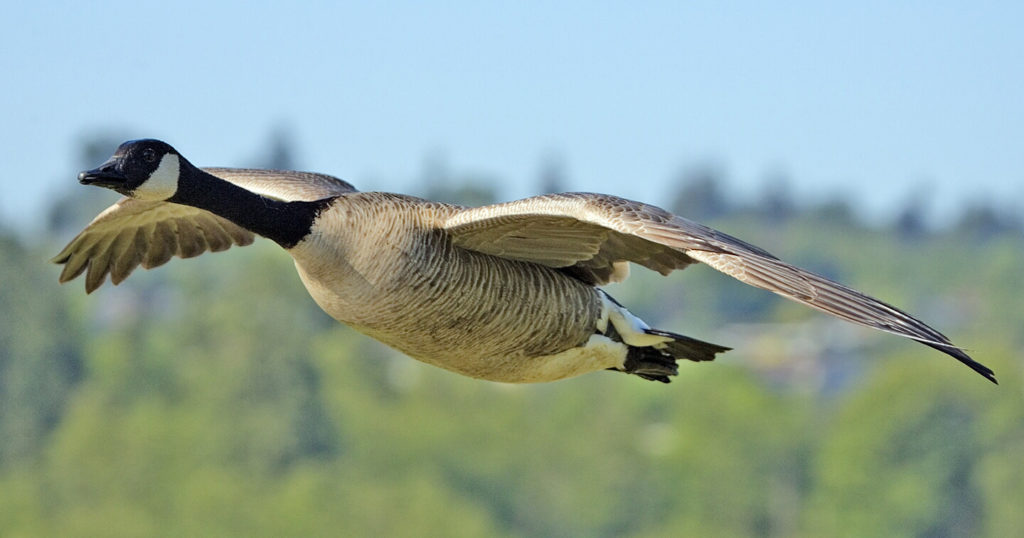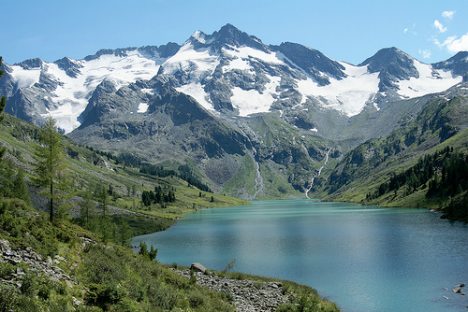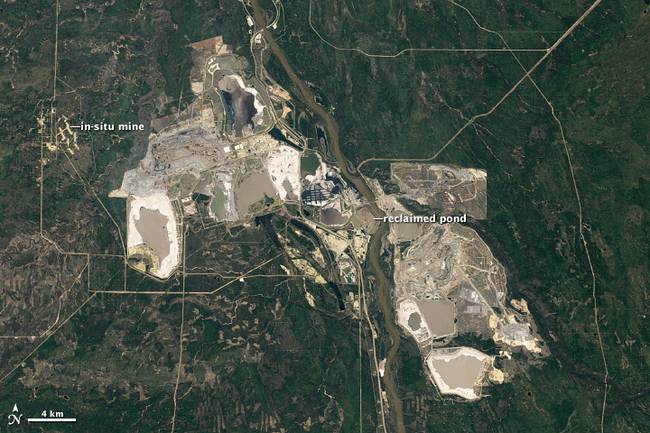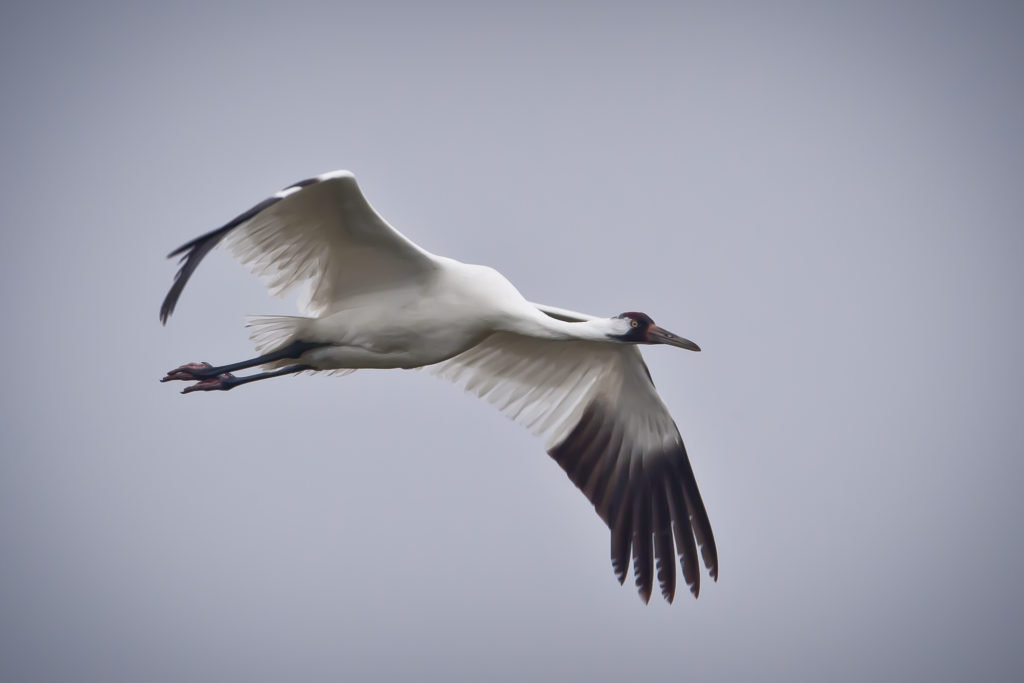Imagine you’re a bird in flight, high in the sky, heading from your wintering grounds in South America to the Boreal Forest, along with a dozen other birds.
You make the journey every year because that forest is your breeding ground. Migration, built into your genes like the colour of your eyes, is physically exhausting and hazardous. Along the way you’re exposed to storms and predators and hunters. You can’t take a bag lunch with you or stop at a restaurant to eat or at a roadside inn for shelter or sleep. You scan the earth below for stopovers where you can rest and be safe, eat, and gear up for the next leg of your journey.
Now you’re flying over the Peace-Athabasca Delta. You’re tired.
Now you’re almost at the southern edge of the Boreal Forest.
You’ve been in the air for many hours since your last stopover and you’re longing to rest, to have some water, some food, to gain strength for the final leg of the journey. In the distance you see a huge pond of water, and you and your fellow birds head down together.
But what you’ve seen is a pond in name only. Soon you are waterlogged in a toxic chemical soup that clings to your feathers and weighs you down. You can’t fly off. You struggle, tire. Eventually you suffocate and drown.
According to some estimates, as many as 5,000 birds a year die in tar sands tailings ponds in northern Alberta. https://www.e-activist.com/ea-campaign/action.handleViewInBrowser.do?ea.campaigner.email=tXMXz1XVY%2FpximSuzDkrjVESkN1MQhKC&broadcastId=135017&templateId=111899
A few facts:
- The Peace-Athabasca Delta, less than 80 kilometres north of oil sands projects, is a stopover spot during migration for 214 species of birds.
- Estimates are that over one million birds stop here during fall migration. https://www.thestar.com/news/atkinsonseries/2015/09/04/tailings-ponds-a-toxic-legacy-of-albertas-oilsands.html
- A report by the Partners In Flight coalition states that there are 1.5 billion fewer birds on the continent now than in 1970, and most of those 1.5 billion birds were lost from Canada’s Boreal Forest region (http://www.partnersinflight.org/wp-content/uploads/2016/08/pif-continental-plan-final-spread-double-spread-1.pdf)
- One of the species that uses this area is the endangered Whooping Crane.
Even after massive conservation efforts for decades there are estimated to be only about 440 individual Whooping Cranes in the wild now. (https://www.allaboutbirds.org/guide/Whooping_Crane/lifehistory)
It’s not that there aren’t regulations protecting migratory birds. Under the Migratory Birds Convention Act, the federal government has the power to ensure these birds are protected from death in tar sands tailings ponds. What it needs is the political will to do so. https://ec.gc.ca/nature/default.asp?lang=En&n=496E2702-1
Big oil companies do make some efforts to keep the birds away from the ‘ponds’. (They are required to do so by law.) They install scarecrows and use noise cannons, for example. But according to Colleen Cassady St. Clair, a biologist at the University of Alberta, these deterrents aren’t working well enough. In 2014 she researched other methods that might be more effective, including using laser technology to create a kind of light show she hoped would work better. http://www.audubon.org/magazine/july-august-2014/how-keep-birds-poisonous-ponds It seems that at least one oil company did begin to use laser as a deterrent. Did it work? Decide for yourself: http://onerivernews.ca/the-oil-sands-bird-deterrent-system-works-perfectly-doesnt-work/
Andrea Johancsik, conservation specialist at Alberta Wilderness Association, sums up the situation: “Bird-deterrent systems are failing, with unacceptably high bird landings even in good conditions.” Birds get used to our human noises. And who knows what they think of the scarecrows?
The sad reality is that the Canadian government is not taking its responsibility to protect migrating birds seriously. As a bird-lover, I am grateful that Ecojustice, a Canadian law firm specializing in environmental justice, is trying to convince the government to step up to the plate. They have crafted a letter to Julie Gelfand, Commissioner of the Environment and Sustainable Development, asking her to investigate why nothing is being done as thousands of birds are killed on tailings ponds every year. I signed the Ecojustice petition and letter – and I hope you will too!
Click here to participate: https://www.support.ecojustice.ca/ea-action/action?ea.client.id=1943&ea.campaign.id=56056&ea.tracking.id=BirdCanada
Thank you!
To see the growth of the oil sands and tailings ponds around the Athabasca River from 1984 to 2011, click here: http://earthobservatory.nasa.gov/Features/WorldOfChange/athabasca.php
For more information about the issue:
http://www.borealbirds.org/blog/preventing-loss-15-billion-more-birds







Yes, Pat, it does now. That’s because I edited it after Fawn pointed out my “typo” – must have been half asleep when I wrote that!
The post says 440 Whooping Cranes, not snow geese, and that figure is pretty accurate!
Karen – I feel the same way. 🙁
Fawn, thank you! Big oops there!
The tar sands in Alberta can be seen from space, that is how obnoxious it is. When I saw the movie “Before the Flood” I was astonished that we have allowed these irresponsible ignoramoses to have caused this deathly destruction to our precious Canadian terrain in Alberta and it’s horrifying effects on wildlife. I am so ashamed as a Canadian to bear witness to this atrocity. I am hopeful that we can regenerate this part of the earth to bring it back to life.
Might want to change the sentence about there only being 440 SNOW GEESE in the wild, lol 😉